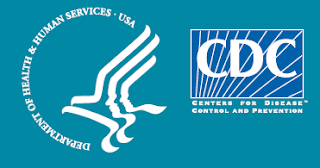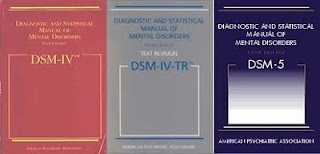In
BRIAN S. v. DELGADILLO, the Court of Appeals of California, Sixth District, in a decision filed July 28, 2010, and reported on line at LEAGLE, dismissed an appeal by a claimant with an Aspergers Disorder diagnosis who had been denied services by a regional center. The appeal involved a number of evidential and procedural issues and the weighing of contrary professional psychiatric opinions. Amongst other findings by the court was the conclusion that "autism" as used, but not defined, in the applicable statute did not include Aspergers Disorder. The court also concluded that "autism" as used clinically refers to the diagnosis of "Autistic Disorder" in the DSM-IV-TR but not to Aspergers Disorder.
" Finally, our interpretation of the statutory language in section 4512, subdivision (a), is consistent with that of the trial court, the ALJ, the Regional Center, and the Department of Developmental Services (DDS). We understand the concerns expressed by Claimant and the amici curiae. However, our review is defined by the record of the proceedings before the ALJ and the superior court. This record does not support a conclusion that the term autism in section 4512, subdivision (a), must encompass a spectrum of developmental disorders that includes Asperger's Disorder, nor does the pertinent legislative history of the statute compel such an interpretation. Questions concerning whether the language of the statute should be amended or expanded to reflect changing diagnostic practices, or to include a broader array of developmental disorders, should be addressed to the Legislature. (Richardson v. City of San Diego (1961) 193 Cal.App.2d 648, 650-651; Strickland v. Foster (1985) 165 Cal.App.3d 114, 119.)" ( Bold empahsis added - HLD)
The court noted that the statute did not define the term "autism" and referred to the DSM as the authoritative clinical guide in order to determine whether the "autism" in the DSM included Aspergers Disorder. After reviewing the record and the testimony of the professionals in the record the Court concluded that autism in the DSM currently refers to Autistic Disorder and does not include Aspergers Disorder:
"Claimant argues that these publications reflect recent trends showing that the DDS, through its regional center system, provides services to individuals with Autistic Spectrum Disorder, including those with Asperger's Disorder, on a case-by-case basis, provided that the individual is substantially disabled by the condition, as that term is defined in section 4512, subdivision (l). The amici curiae also rely on these studies and guidelines in pressing their claim that the current use of the term autism in the mental health community describes a range of disorders known as Autistic Spectrum Disorder, which includes both Autistic Disorder and Asperger's Disorder.
It appears from these materials that increasing numbers of people seeking services in the regional center system are presenting with various forms of Autistic Spectrum Disorder, as described in the Best Practice Guidelines, and that there is an emerging need to clarify the eligibility requirements under the statute. However, while claimant and the amici curiae have impressed upon us the importance of these issues, we must reject their arguments, for several reasons.
First, contrary to what the amici curiae argue, the materials before us by no means reflect a settled consensus in the scientific community regarding the use of the term Autistic Spectrum Disorder. We note that the authors of the Best Practice Guidelines point out that Autistic Spectrum Disorder, as used in the Guidelines, is a descriptive term, and is not meant to be a diagnosis. The authors defer to the authority of the DSM-IV-TR as the current standard, which classifies Autistic Disorder and Asperger's Disorder as two separate disorders. The amici contend that the newest edition of the DSM will reject any distinction between the two disorders and has formally recognized autism as a spectrum disorder. However, this new edition of the DSM (DSM-V) is in the preliminary draft stages only and will not be published in final form until 2013.
Furthermore, even among those professionals who advocate using the descriptive term Autistic Spectrum Disorder, there is disagreement as to which pervasive developmental disorders should be included in the term. (See Caseload Update, p. 6, ["[b]oth nationally and within California, there is not total agreement on which diagnoses should be included as part of the spectrum."].) And there is controversy around the spectrum concept itself. (See Best Practice Guidelines, p. 147 ["the assumption that all of the conditions on the so-called `spectrum' represent some variant of autism remains a hypothesis and is not an established fact."].) In sum, resolution of what appears to be an unsettled debate in the psychiatric community as to whether autism should be re-classified as a broader Autistic Spectrum Disorder involves clinical, rather than legal, determinations.
Second, Claimant's argument that the DDS has endorsed a definition of autism to mean Autistic Spectrum Disorder, thus including Asperger's Disorder, is directly contradicted by the DDS itself, which has filed a brief in this appeal in response to our granting of Claimant's request for judicial notice. The DDS has clarified that it has "not issued any formal interpretations of `autism' under section 4512, subdivision (a)." The Best Practice Guidelines itself cautions that it offers only recommendations, and "cannot be interpreted as policy or regulation." The DDS, and the authors of the Best Practice Guidelines, continue to accept the definitions in the DSM-IV-TR as current authority. The Caseload Update, prepared by the DDS, equates autism with Autistic Disorder and does not include in its data "people with other disorders on the spectrum," such as Asperger's Disorder. It provides that "[f]or the purpose of this report, the term `autism' refers only to the condition characterized by the [DDS] as `autistic disorder' [as defined in the DSM-IV-TR]." The position of the DDS is clearly stated in its brief: "`[A]utism' under the Lanterman Act should be interpreted to mean `Autistic Disorder' as defined under the DSM-IV-TR, and accordingly should not include Asperger's."[ 6 ]"
The court while acknowledging the disabling challenges faced by many with Aspergers Disorder also offered the opinion that the deficits afflicting those with Autistic Disorder are more severe:
"It is argued that individuals who have been diagnosed with Autistic Disorder and those with Asperger's Disorder may be equally disabled and similarly in need of services. Thus, there is no reasonable basis to find some individuals eligible for services and to exclude others, except on a case-by-case assessment of their level of disability. We understand, and are sympathetic with, the argument that services should be available to all individuals with substantial disabilities. However, the Legislature has specifically limited the categories eligible for services under the Lanterman Act. And Autistic Disorder and Asperger's Disorder, although they have characteristics in common, are presently distinguished by the diagnostic criteria set forth in the DSM-IV-TR. With Austistic Disorder there are more severe communication deficits not found in people with Asperger's Disorder. With Autistic Disorder diagnostic symptoms are obvious in early years, and may include mental retardation. Those with Asperger's Disorder exhibit no cognitive or language delays. These differences describe a greater severity of deficits in people with Autistic Disorder and provide a reasonable basis for the regional center system serving that population. And, as the record shows, people with Asperger's Disorder are served through the mental health system."
As noted above, the court noted some important distinctions between Autistic Disorder and Aspergers Disorder including diagnostic differences related to severe communication deficits in persons with Aspergers Disorder which are not present in Aspergers, the fact that Autistic Disorder symptoms are obvious in early years, the fact that mental retardation may be present in Autistic Disorder and the fact that those with Aspergers Disorder do not show cognitive or language delays.
The California appeal court in this case expressly stated that persons with Aspergers can also suffer from deficits but they are different in kind and severity from those which accompany Autistic Disorder. I have made this observation many times on this site. Given that the DSM is the primary clinical tool in North America for assisting in the diagnosis of what are described as mental disorders which impact on the functioning abilities of those with various DSM diagnoses why on earth are the DSM5 committees combining the two together into one New Autism Spectrum Disorder? How does this obscuring of important differences in functioning areas and severity levels in the authoritative diagnostic manual help persons with either disorder?
























